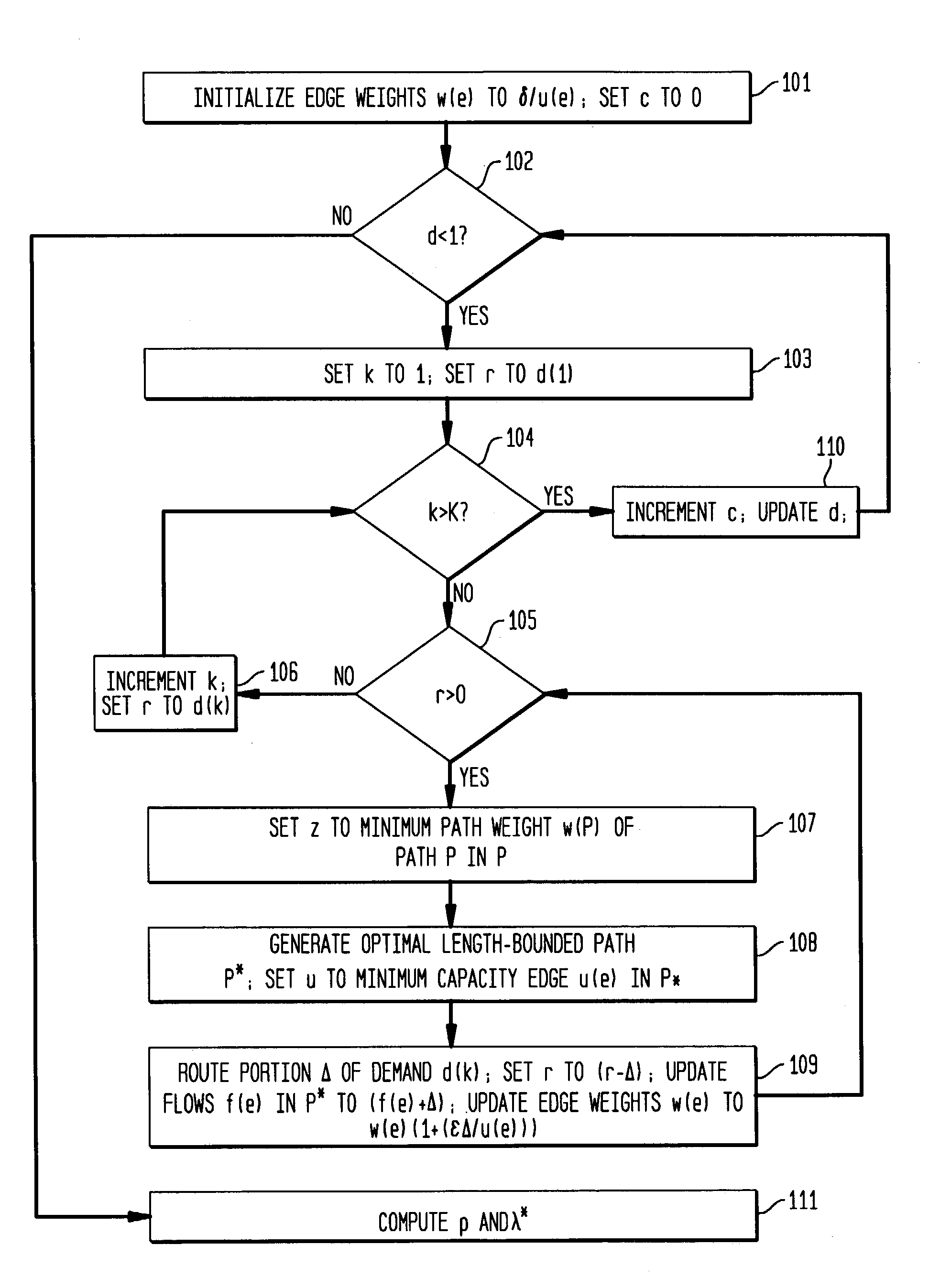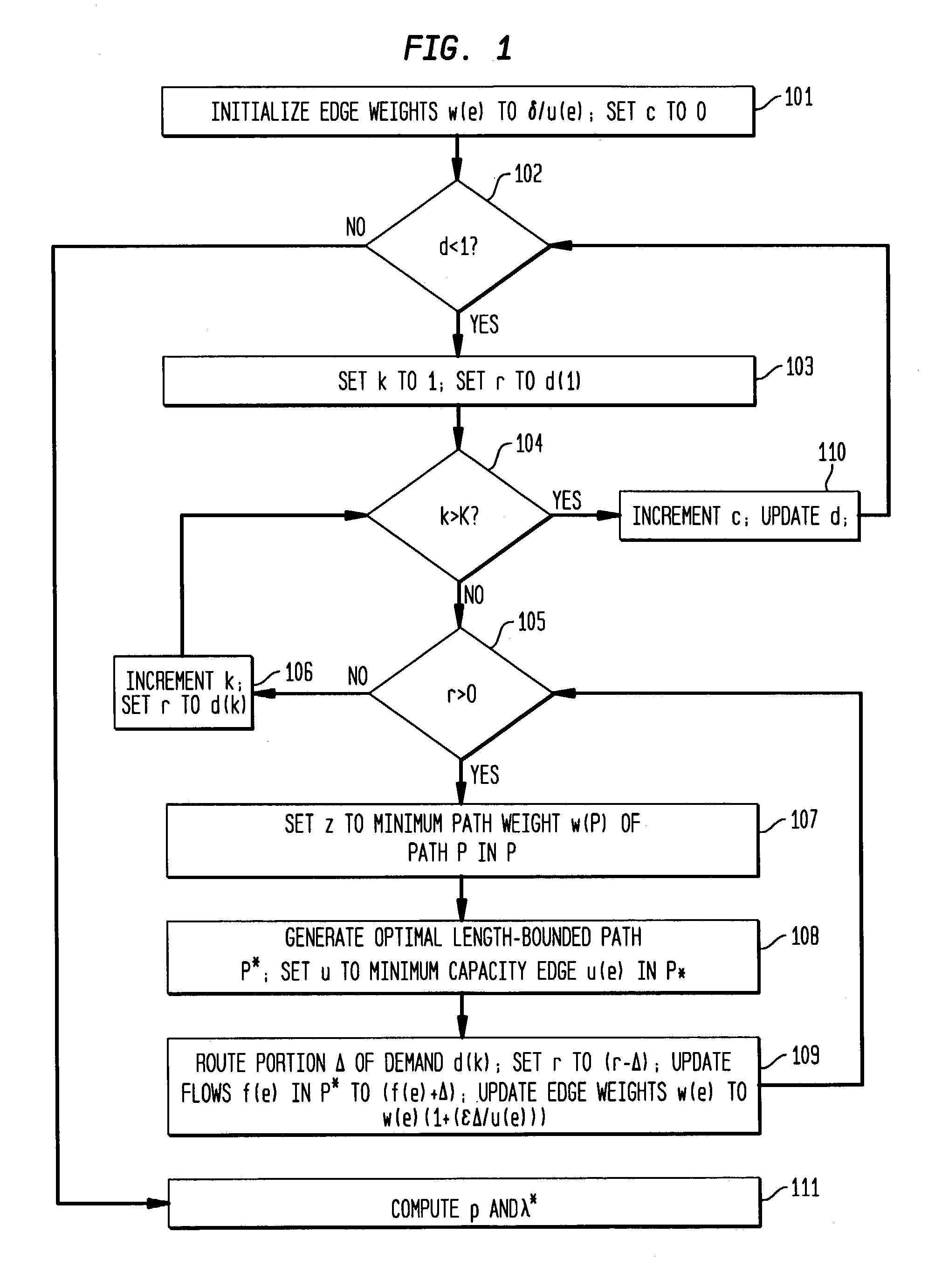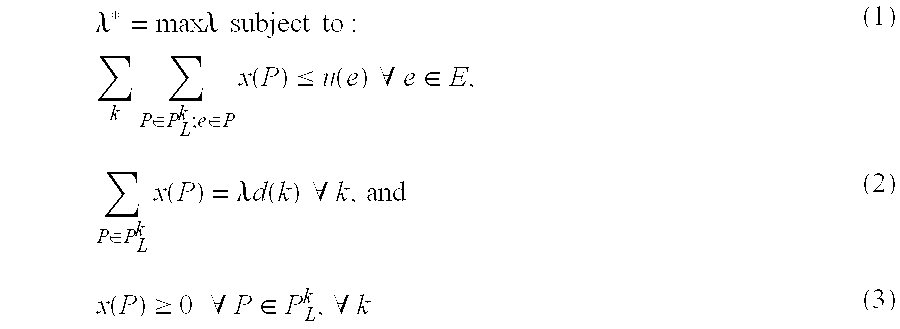Capacity allocation for networks having path length routing constraints
a technology of path length and routing constraints, applied in data switching networks, frequency-division multiplexes, instruments, etc., can solve the problems of routers introducing delay and jitter, expensive optical regenerators in optical networks, and limited capacity allocation
- Summary
- Abstract
- Description
- Claims
- Application Information
AI Technical Summary
Benefits of technology
Problems solved by technology
Method used
Image
Examples
Embodiment Construction
[0016]The following definitions may aid in an understanding of the present invention. An optical network of nodes and links may be modeled as a directed graph G(V,E), where V is a set of vertices representing the nodes of the network (e.g., optical switches) and E is a set of edges representing the (e.g., optical) links connecting the nodes. Associated with each edge e is an associated capacity c(e) of the edge, an associated length l(e) of the edge, and optionally an associated cost b(e) of the edge for routing a unit flow over the edge. The capacity of an edge may be, for example, the available bandwidth of the corresponding link. The length of an edge may be a number representing the physical length of the corresponding link or a logical hop length. The cost of an edge may be a value that represents an assessed cost for routing a flow over the corresponding link.
[0017]One or more connections are routed between K source-destination node pairs, where each of the source-destination ...
PUM
 Login to View More
Login to View More Abstract
Description
Claims
Application Information
 Login to View More
Login to View More - R&D
- Intellectual Property
- Life Sciences
- Materials
- Tech Scout
- Unparalleled Data Quality
- Higher Quality Content
- 60% Fewer Hallucinations
Browse by: Latest US Patents, China's latest patents, Technical Efficacy Thesaurus, Application Domain, Technology Topic, Popular Technical Reports.
© 2025 PatSnap. All rights reserved.Legal|Privacy policy|Modern Slavery Act Transparency Statement|Sitemap|About US| Contact US: help@patsnap.com



